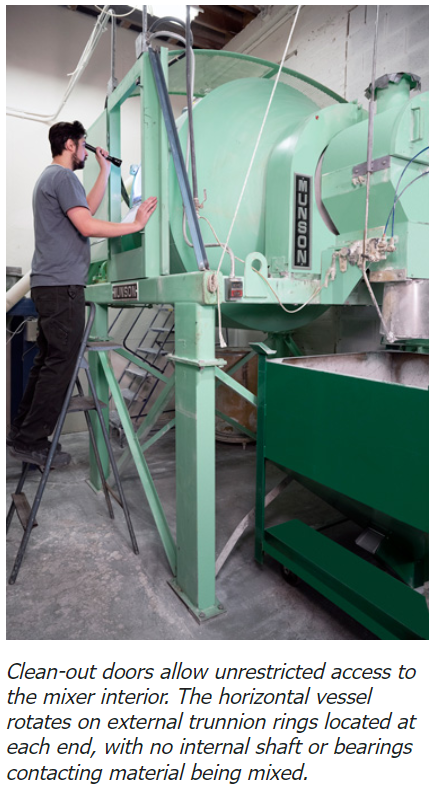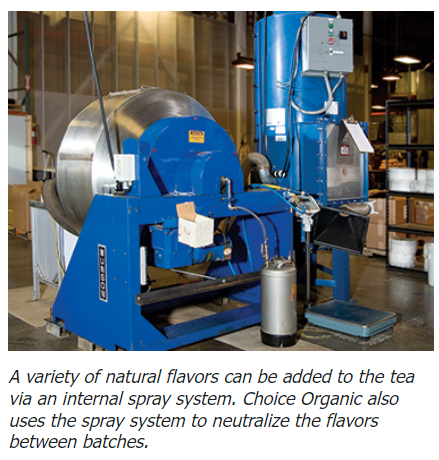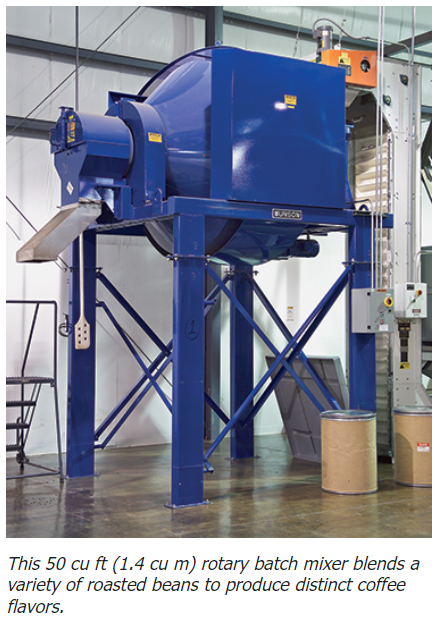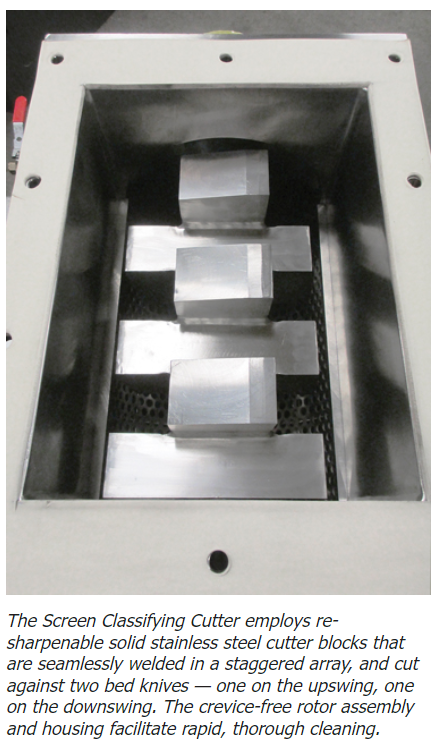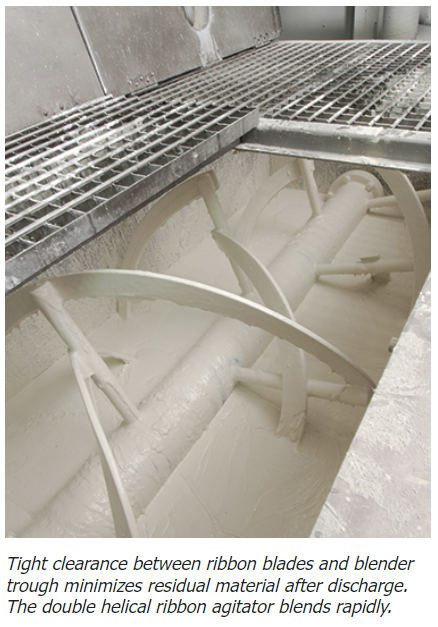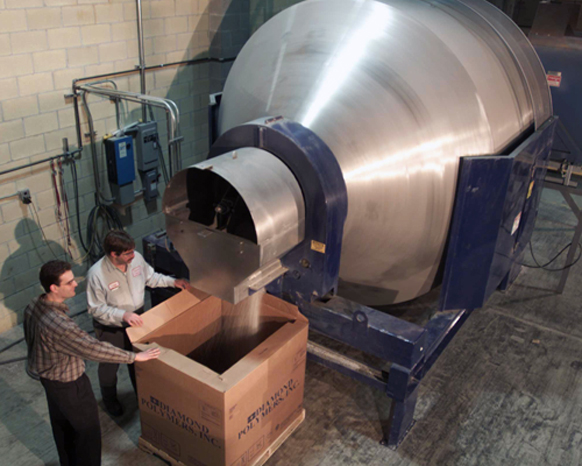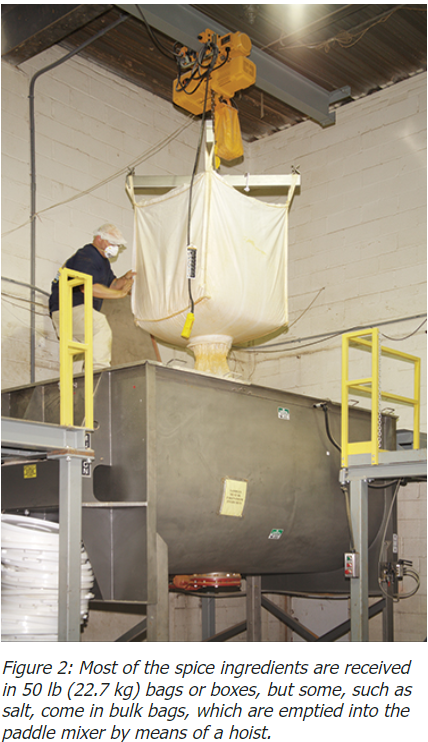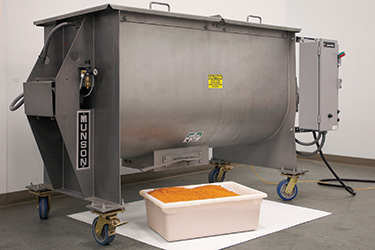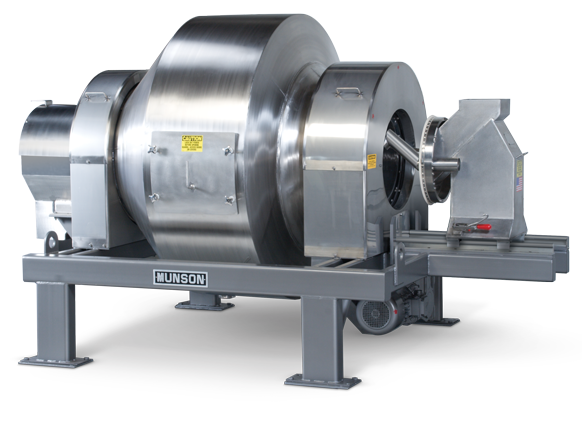Rotary Mixer Keeps Hot-Melt Adhesives Cool
The mixer, which has a useable batch capacity of 40 cu ft (1.13 m3), operates in a dedicated room that also houses a belt conveyor, bag breaking station, and screw conveyor. Here, an operator transfers 55 lb (25 kg) bags of ingredients from pallets to the belt conveyor, which terminates at a bag dump station into which material is dumped. An integral screw conveyor transfers the material into the inlet of the mixer while it is rotating. Once the last bag is added, the mixer continues running for 20 minutes. At the end of the cycle, the operator flips a switch, actuating an air cylinder that opens the mixer’s stationary outlet. With the vessel continuing to rotate, the 1,000 lb (454 kg) batch discharges through a collapsible chute into a mobile bin.
Rotary Mixer Keeps Hot-Melt Adhesives Cool Read More »

